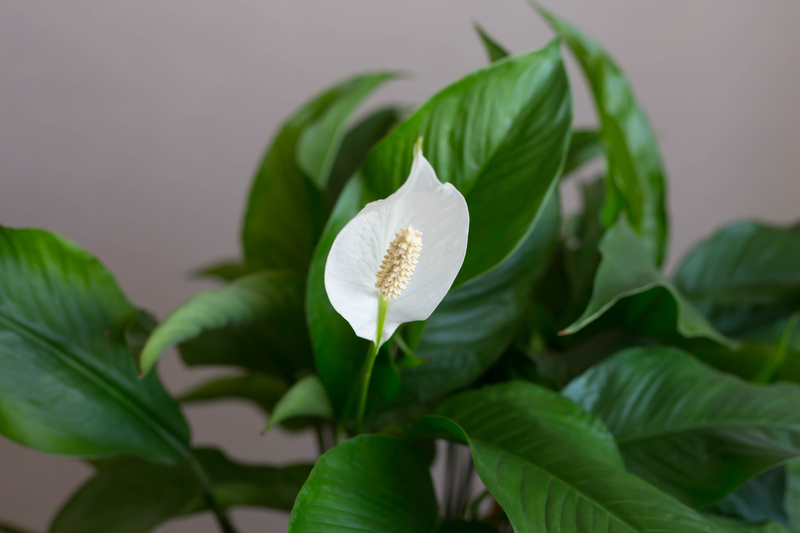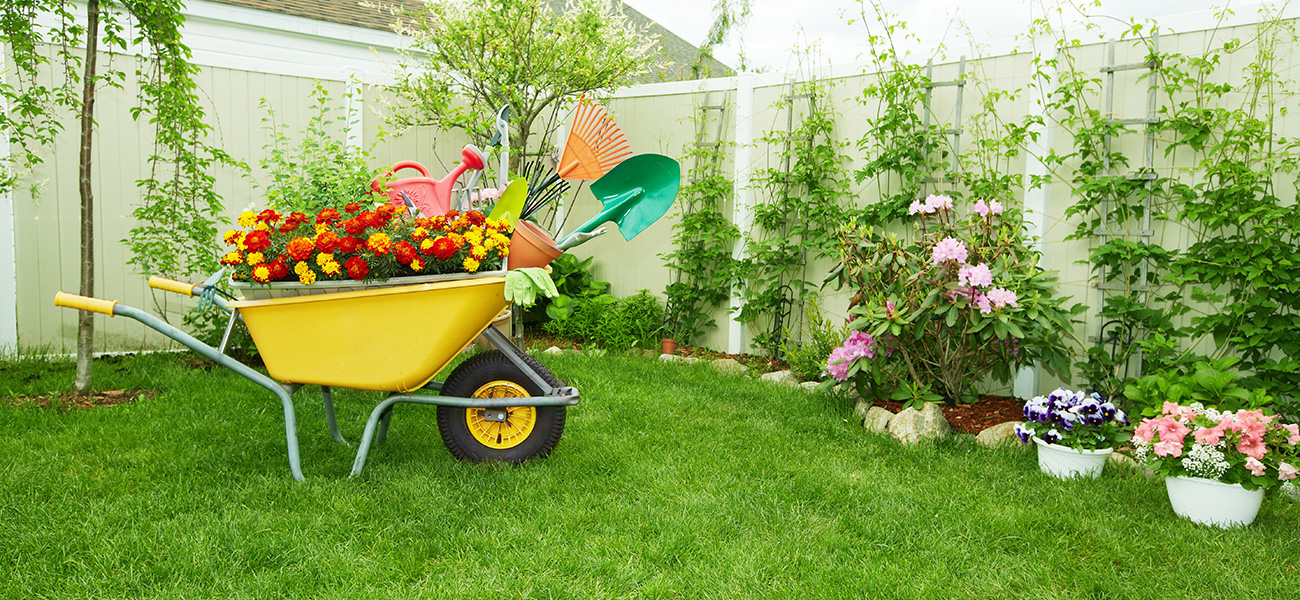Innovative Ways to Embrace Vertical Gardening
Posted on 15/06/2025
Innovative Ways to Embrace Vertical Gardening
Are you looking to maximize your gardening space, beautify your home, or grow your favorite plants in creative ways? If so, vertical gardening offers a wealth of opportunities for urban dwellers, small-space gardeners, and anyone interested in sustainable living. In this comprehensive guide, we'll explore innovative ways to embrace vertical gardening, demonstrate its many advantages, and provide practical tips to help you start your own thriving vertical oasis.

What Is Vertical Gardening?
Vertical gardening refers to the practice of growing plants upward instead of outward by utilizing walls, trellises, shelves, and other vertical surfaces. Whether you're working with a small apartment balcony or a full backyard, you can transform virtually any vertical space into a lush, productive area for flowers, vegetables, herbs, or even fruits.
- Space Efficiency: Vertical planting makes use of unused space, allowing you to grow more plants in limited areas.
- Decorative Appeal: Vertical gardens can serve as living art, beautifying both indoor and outdoor spaces.
- Improved Air Quality: Plants naturally purify the air, and a dense vertical garden can help improve your environment.
- Ease of Maintenance: Tending to plants at eye-level reduces the need for bending and kneeling, making gardening more accessible.
Benefits of Vertical Gardening Solutions
Before diving into creative ideas, let's cover the primary benefits of vertical gardening techniques:
- Saves Space: Suitable for both small urban patios and large backyards.
- Boosts Yield: Enables intensive planting and efficient harvests.
- Enhances Insulation: Outdoor vertical gardens can insulate buildings, reduce energy usage, and mitigate urban heat.
- Reduces Pests: Many climbing plants are less susceptible to soil-borne pests and diseases.
- Flexible Design: Vertical planters can be customized for any style or environment.
Innovative Vertical Gardening Ideas to Transform Your Space
1. Living Walls (Green Walls)
Perhaps the most visually striking example of vertical gardening is the living wall--a wall-mounted structure supporting a diverse array of plant species. These gardens not only add dramatic greenery to interiors and exteriors but also promote cooling and air purification.
- DIY Living Walls: Use modular planter systems, felt pockets, or even recycled pallets filled with soil to create your own living wall.
- Hydroponic Panels: To reduce mess and maintenance, consider hydroponic vertical wall units that deliver nutrients via a self-contained watering system.
- Best Plants: Ferns, pothos, philodendron, herbs, succulents, and flowering perennials thrive in vertical green walls.
2. Vertical Garden Towers
Vertical towers are freestanding structures--often cylindrical or rectangular--that allow for dense planting in a small footprint. They're popular for growing vegetables, strawberries, or herbs and can be constructed from plastic containers, stacked pots, or even PVC pipes.
- Stacked Pots: Increase your harvest by stacking pots of varying sizes, ensuring each layer gets enough light and water.
- PVC Pipe Towers: Drill holes in large PVC pipes, fill them with soil, and insert seedlings for a cost-effective, space-saving solution.
- Compost Integration: Some towers feature a composting core, providing natural fertilizer as the garden grows--an ideal feature for sustainable vertical gardening.
3. Pallet Vertical Gardens
Reclaimed wooden pallets offer an eco-friendly way to build an upright garden. By attaching landscape fabric, filling pallet spaces with soil, and planting flowers or greens, you achieve a rustic--yet highly functional--vertical gardening display.
- Easy to Source: Pallets are often free or inexpensive, making this an accessible project.
- Customizable: Paint, stain, or seal pallets for a finished look that matches your decor.
- Best Use: Perfect for leafy greens, trailing herbs, and compact annual flowers.
4. Modular Wall Planters
Modular wall planters are pre-made units that snap together like tiles. Designed for quick installation, they're perfect for renters or anyone seeking flexibility in their vertical garden arrangement.
- Ease of Assembly: Quick setup and removal with minimal wall damage.
- Expandable: Add more modules as your plant collection grows.
- Watering Features: Many systems have built-in irrigation, simplifying plant care.
5. Trellis and Climbing Plant Designs
A classic yet innovative approach is to train vining or climbing plants up trellises, wires, or mesh. These supports can be used on fences, balconies, or exterior walls to cultivate vegetables or ornamentals.
- Edible Vertical Gardens: Grow pole beans, peas, cucumbers, or tomatoes vertically for better air circulation and easy harvesting.
- Green Dividers: Use a trellis as a living privacy screen or outdoor room divider.
- Flowering Vines: Clematis, sweet peas, and morning glories provide spectacular season-long blooms.
6. Hanging Planters & Pocket Gardens
For those with limited surface area or no yard at all, hanging pots and pocket planters are the ultimate space-savers. Suspend baskets, recycled bottles, or fabric shoe organizers filled with soil from railings, ceilings, or window grilles.
- Visual Variety: Mix plant types and pot heights for a lush, cascading effect.
- Window Farms: Create an indoor vertical herb garden by lining up rows of herbs or greens along your kitchen window.
- Low Cost: Convert household items like tin cans or glass jars into unique hanging planters.
Smart Techniques to Maximize Your Vertical Garden
Choosing the Right Plants for Vertical Gardens
Not all plants are suited for vertical gardening solutions. Look for species that are lightweight, have shallow roots, and adapt well to minimal soil. Some top choices include:
- Herbs: Basil, oregano, mint, parsley
- Greens: Spinach, lettuce, arugula, kale
- Vining Crops: Tomatoes, beans, peas, cucumbers, squash
- Ornamentals: Succulents, ferns, trailing petunias, hoyas
Soil and Drainage Essentials
Vertical gardens tend to dry out faster than traditional beds, so pay special attention to soil selection and drainage.
- Use quality, lightweight potting mix with added organic compost for nutrient retention.
- Ensure good drainage with holes or gravel layers at the base of your planters.
- Mulch your planters to retain moisture and control temperature fluctuations.
Irrigation Solutions
Efficient watering systems make maintaining a lush vertical garden easier:
- Drip Irrigation: Install drip tubes or soaker hoses for even, consistent watering.
- Self-Watering Planters: Many modular units include reservoirs that reduce watering frequency.
- DIY Bottle Irrigation: Repurpose plastic bottles with small holes to slowly release water at the roots.
Lighting and Fertilization
- Placement Matters: Position your vertical garden where it receives adequate sunlight or supplement with LED grow lights for indoor setups.
- Regular Feeding: Vertical gardens may require more frequent fertilizer application, as nutrients leach more quickly through the soil.
Creative Tips for Expanding Your Vertical Gardening Repertoire
- Upcycle Everyday Objects: Transform rain gutters, ladders, shoe organizers, or pallets into customizable vertical planting systems.
- Edible Art: Combine herbs, salad greens, and edible flowers to create striking, functional vertical tapestries.
- Incorporate Technology: Install moisture sensors and automatic watering systems to reduce maintenance and encourage plant health in your vertical garden.
- Year-Round Greenery: Include evergreens or cold-hardy annuals to keep your vertical garden vibrant throughout the seasons.
- Involve the Family: Get kids engaged by dedicating a section of your vertical garden for their own favorite vegetables or flowers.
How Vertical Gardening Supports Sustainability
By embracing vertical gardening innovations, you're investing in a sustainable future. Some of the eco-friendly advantages include:
- Reduces Food Miles: Grow fresh produce at home and cut your reliance on store-bought goods.
- Improves Urban Biodiversity: Vertical gardens provide vital habitats for pollinators and other urban wildlife.
- Decreases Water Usage: Efficient watering systems and mulching reduce waste.
- Recycles Materials: Upcycling and DIY construction limit your environmental footprint.
- Enhances Air Quality and Insulation: Dense plant walls can filter air and shield buildings from temperature extremes.
Overcoming Challenges in Vertical Gardening
- Weight Management: Ensure walls or supports are strong enough to hold the soil, plants, and water weight of your vertical system.
- Access to Sunlight: Regularly evaluate growing locations and rotate plants if necessary for even light exposure.
- Consistent Maintenance: Vertical gardens can dry quickly and may require more frequent observation for pests and nutrient needs.
- Costs: While many solutions are DIY and low-budget, some pre-fabricated vertical gardening kits may require a larger upfront investment.
With proper planning and the right plant selections, these challenges can be overcome, allowing you to enjoy the benefits of innovative vertical gardening for years to come.

Frequently Asked Questions About Vertical Gardening
Which vegetables are best for vertical gardens?
Climbing vegetables like beans, peas, and cucumbers, as well as leafy greens such as spinach and lettuce, thrive in vertical gardens. Compact tomatoes, peppers, and even strawberries can be grown with the right support.
Can I start a vertical garden indoors?
Yes! Many modular planters and living wall systems are designed for indoor use. Just ensure your plants receive enough light (natural or via grow lights) and that your wall surface can tolerate moisture.
How do I prevent pests and diseases in vertical planters?
Good air circulation, proper watering, and regular inspection discourage pest and disease issues. If problems arise, use organic controls like neem oil or insecticidal soap.
Is vertical gardening expensive?
DIY methods such as using pallets, recycled containers, or homemade pocket planters are affordable. Pre-made green wall systems and sophisticated hydroponic towers may cost more but often pay off with higher yields and lower maintenance over time.
Conclusion: Start Your Innovative Vertical Garden Today
Embracing innovative ways to practice vertical gardening allows you to create thriving green spaces regardless of your available room or gardening experience. Whether you opt for a dramatic living wall, a productive vegetable tower, or a cozy hanging planter, vertical gardens offer beauty, sustainability, and satisfaction.
Ready to get started? Choose a method that suits your space and style, experiment with bold plant combinations, and watch your garden climb new heights.
Are you already using creative vertical gardening solutions? Share your experiences, tips, or questions below and join the growing community of vertical garden enthusiasts!



